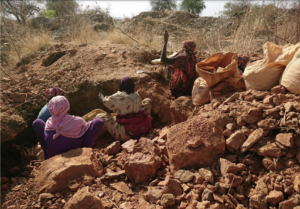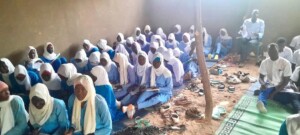Sudan OCHA bulletin 43: More than 7,000 South Kordofan displaced reportedly need aid
Thousands of displaced people in Abu Kershola locality in South Kordofan who fled their homes in 2014 and have been displaced several times since then, are reportedly in need of humanitarian assistance. Following a measles outbreak in Abyei Administrative Area in September, a mass measles vaccination campaign took place from 10 to 17 October. An estimated 3,650 displaced people returned to Himeida village in West Darfur. The humanitarian response for South Sudanese refugees in East Darfur is continuing.
Thousands of displaced people in Abu Kershola locality in South Kordofan who fled their homes in 2014 and have been displaced several times since then, are reportedly in need of humanitarian assistance. Following a measles outbreak in Abyei Administrative Area in September, a mass measles vaccination campaign took place from 10 to 17 October. An estimated 3,650 displaced people returned to Himeida village in West Darfur. The humanitarian response for South Sudanese refugees in East Darfur is continuing.
The UN Office for the Coordination of Humanitarian Affairs reported in its latest bulletin that an inter-agency mission carried out a needs assessment among displaced people in Abu Kershola locality from 16 to 21 October.
The government’s Humanitarian Aid Commission (HAC) and the International Organization for Migration (IOM) had reported 7,100 displaced in need of aid in the area. An inter-agency mission visited 12 villages and Abu Kershola town, and identified 4,400 displaced in need. The mission members were unable to reach the remaining displaced so far.
Recommendations from the mission include carrying out general food distributions in the villages assessed; carrying out a mid-upper arm circumference (MUAC) screening in the areas where displaced are sheltering, and opening nutrition centres in Hijeer village; and sending medication and micro-nutrient supplies to nutrition centres in Umbaraka, Kaling and Abu Kershola.
 Abyei: 21,500 children vaccinated against measles
Abyei: 21,500 children vaccinated against measles
Following a measles outbreak in the Abyei Administrative Area in September, reported by the Sudanese Health Ministry and the World Health Organisation (WHO), a mass measles vaccination campaign was led by IOM from 10 to 17 October.
The campaign was supported by staff from the Health Ministry, WHO, Unicef, and the INGOs Goal and Médecins Sans Frontières (MSF).
IOM reported that access to several areas was disrupted due to heavy rain and poor roads for several days during the campaign. Escorts from the UN Interim Security Force for Abyei enabled vaccinators to safely reach populations in remote and hard-to-reach areas.
According to IOM in South Sudan, measles is one of the leading causes of death among young children in the area, where access to health care is limited, affecting thousands of children.
Livelihood Assessment in Himeida village, West Darfur
Since April 2016, an estimated 3,650 displaced people (730 families) returned to Himeida village in Habila locality from West Darfur camps and eastern Chad refugee camps.
The returnees mainly depend on collecting firewood and making charcoal as a means living. Less than half of the displaced families managed to cultivate small areas of land, because of a lack of seeds and tools.
A food security and livelihood assessment, led by the Food and Agriculture Organization (FAO), the World Food Programme (WFP), and the West Darfur Ministry of Agriculture, took place from 10 to 12 October.
The mission recommended providing immediate emergency food assistance to the whole returnee population (3,650 people) during the current lean period, conditional food assistance to vulnerable families, and the distribution of one-month emergency food rations for children from 6-59 months.
Support for income generating activities and provision of start-up kits was also recommended as well as the distribution of seeds, tools and irrigation kits, small ruminants and poultry and donkey carts as well as the establishment of veterinary services. A dam will be constructed to provide water for crops and animals and existing wells will be rehabilitated.
Humanitarian response for South Sudanese refugees in East Darfur continues
Since January, nearly 55,000 South Sudanese refugees have arrived in East Darfur, fleeing conflict and food insecurity. This represents 60 per cent of the total 90,516 refugees who have arrived from South Sudan since January this year.
The refugees are scattered across the state, with many seeking livelihood opportunities in rural areas, OCHA reports. A new refugee camp in Kario has been established, with over 3,700 refugees recently relocated from the Khor Omer camp. Chlorinated water is being trucked to sites at 50,000 litres per day and no overcrowding is noticeable at water points.
Unicef and partners are working to support displaced children with a focus on unaccompanied and separated children. A health clinic is now operational with some 50 consultations being provided per day to refugees and the host community.
Support for South Sudanese refugees from Raja currently residing in El Ferdous has been approved via a $ 2.6 million allocation from the Sudan Humanitarian Fund. This funding will support the urgent needs of an estimated 10,000 refugees who will be settled to a new site in El Nimir.











 and then
and then